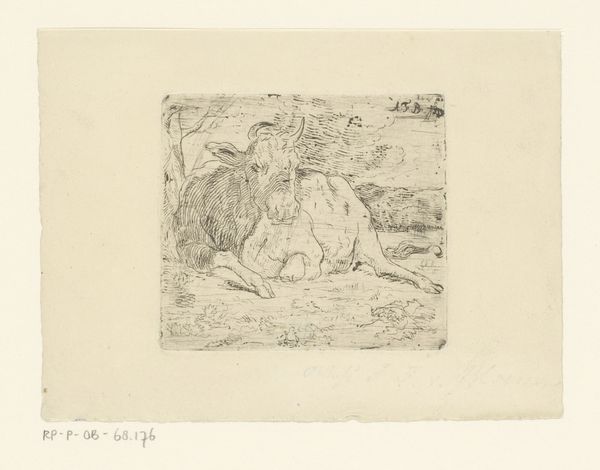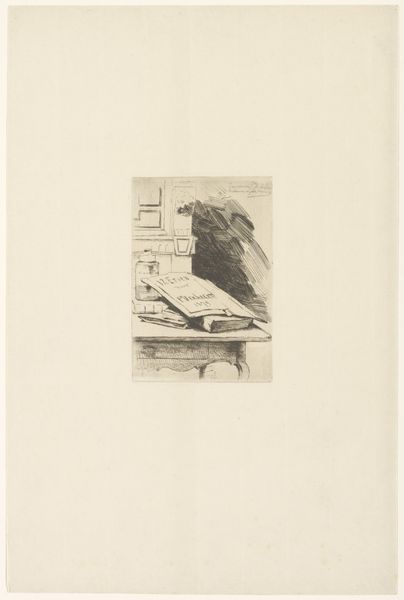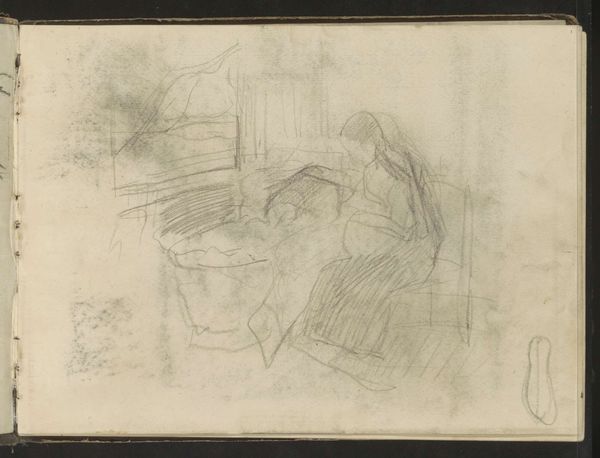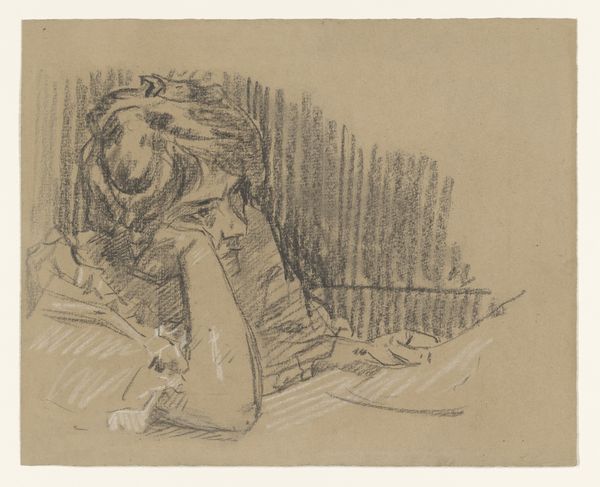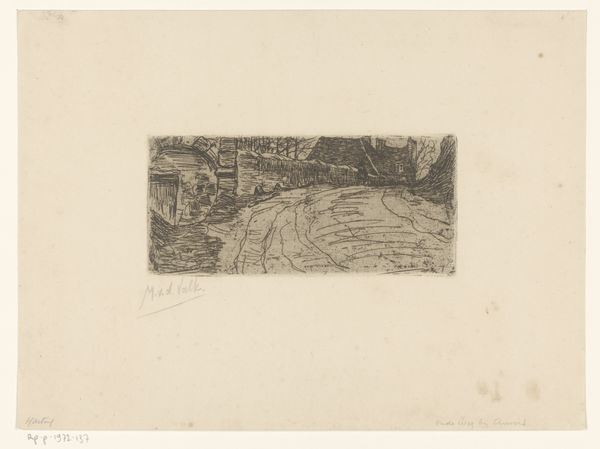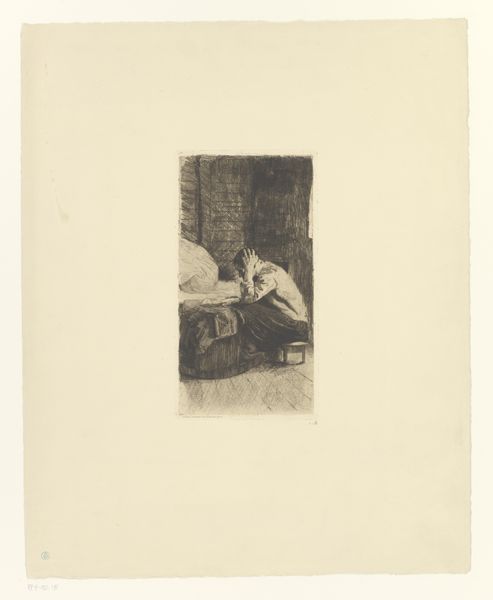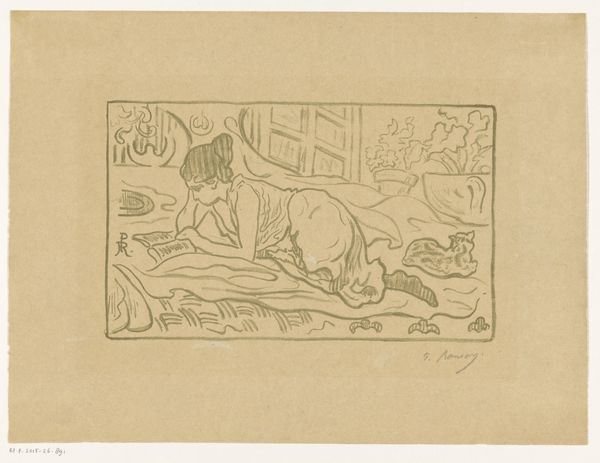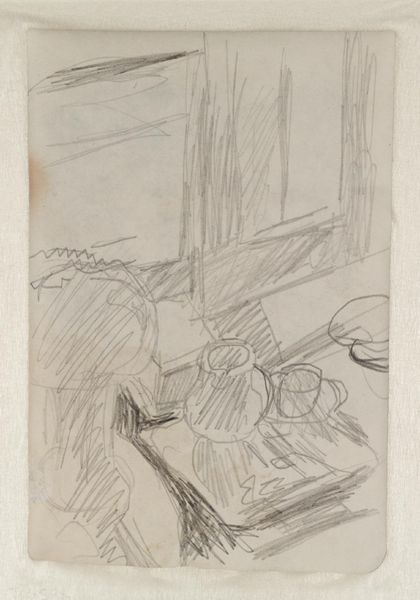
drawing, print, etching, paper
#
portrait
#
drawing
#
art-nouveau
# print
#
etching
#
paper
#
line
#
genre-painting
Dimensions: height 119 mm, width 137 cm
Copyright: Rijks Museum: Open Domain
Curator: Looking at this etching, it feels like catching a stolen moment, a fragment of domesticity preserved in ink. The image is Jan Toorop’s "Riet van Houten spelend aan een vleugel," created in 1895. Editor: There’s a haunting, almost dreamlike quality to it, wouldn’t you agree? The subtle gray tonalities of the etching and the stark, angular lines suggest a kind of detached intimacy, like a memory fading at the edges. Is this detached intimacy accessible considering issues around class? Was Riet able to benefit from wealth and leisure to sit at that piano and to receive lessons to read the music books in front of her? What other moments may be have stolen from women who had less opportunities or time. Curator: That’s perceptive. The work balances the personal, an intimate portrait of a young woman playing piano with the impersonal nature of the lines from which the art nouveau springs. As the line goes on with its flourishes, the composition is balanced carefully to provide this sense of home, and it invites us into this space while it maintains an almost invisible barrier. The art almost disappears, revealing something even deeper. Editor: I find it particularly interesting that Toorop made it a print. He seemed to be challenging art world structures and allowing more accessibility and reproduction in an era where mass-produced artworks where becoming possible through technologies, making a conscious decision to align his artistic production with social concerns and democratization through artistic tools. What can mass-produced portraiture or art tell us about women's experiences with industrial revolution and labor? Curator: The drawing-like etching evokes nostalgia, especially for art and genre paintings where the private space is on display as much as what transpires inside. The girl playing seems lost in reverie, so too, the viewer falls within her soundless world as well, contemplating both herself and music together. Editor: Yes, she performs not only music but class for us. Yet, by sharing these more "accessible" intimate settings with people from other stations and contexts who had or have difficult or less-funded personal circumstances and homes, the very sense of class and identity are, themselves, broken apart and open for analysis. Curator: Precisely. It reveals, doesn’t it? I come back to that feeling I can sense behind her shoulders. Editor: Absolutely, it’s those ambiguities, and the tensions it presents, that keep me hooked, still processing it today.
Comments
No comments
Be the first to comment and join the conversation on the ultimate creative platform.
